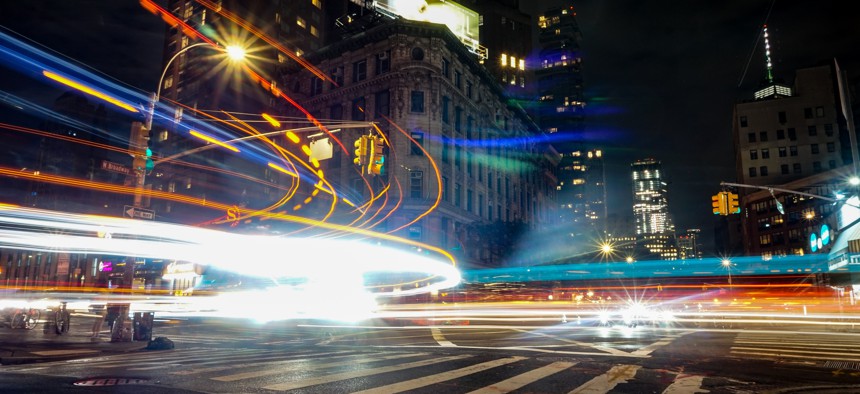Connected vehicle, infrastructure data drives roadway safety

Emily Kawasaki / EyeEm / Getty Images
City planners will soon be able to share and validate digital models of traffic conditions with the help of an open-source tool that collects data from connected vehicles and infrastructure sensors.
Open-source software that collects data from infrastructure-based sensors and communicates with automated vehicles will help city planners improve safety at intersections.
Later this year, the Department of Energy’s National Renewable Energy Laboratory (NREL) plans to release an open-source infrastructure perception and control (IPC) computational engine that collects real-time roadway information from LiDAR, radar and camera sensors and helps researchers build accurate digital representations of intersection traffic.
The rapid development of infrastructure-to-vehicle communications and wider adoption of connected vehicles presents researchers with unique opportunities to improve traffic signal control, NREL officials said in a release. While most auto accidents are the result of human error, a surprisingly high number – 21% of all crashes – take place at traffic intersections, which are relatively more populated with infrastructure sensors.
In complex urban environments, a single vehicle cannot fully sense its surroundings without sufficient infrastructure support.
A combination of infrastructure and vehicle sensor readings from multiple vantage points will help researchers create a digital twin that will help spot potential safety and cybersecurity weaknesses, officials said. Furthermore, with the IPC framework, developers will be able to collaborate and share validated models that continually improve the technology.
NREL has already partnered with Colorado Springs to install a prototype IPC system at one of the city’s intersections. Insights from the collected vehicle and pedestrian data will help tune and validate the IPC engine.
In addition to improving safety, IPC applications enabled by NREL’s open-source tool will also increase the amount of publicly available information on automated vehicles. Unlike commercial automakers that protect their intellectual property, this tool will support numerous applications that connect vehicles to transportation infrastructure.
"We're optimizing the infrastructure and signal controls to work with cars' automated features, rather than focusing exclusively on vehicle technology and operation," said Project Lead and NREL Postdoctoral Researcher Rimple Sandhu. "Doing that, we'll be able to put a safer overall transportation system in place sooner, to create a world where self-driving cars can safely coexist with older model vehicles, as well as with people on foot and on bikes."





